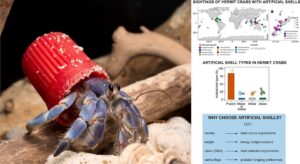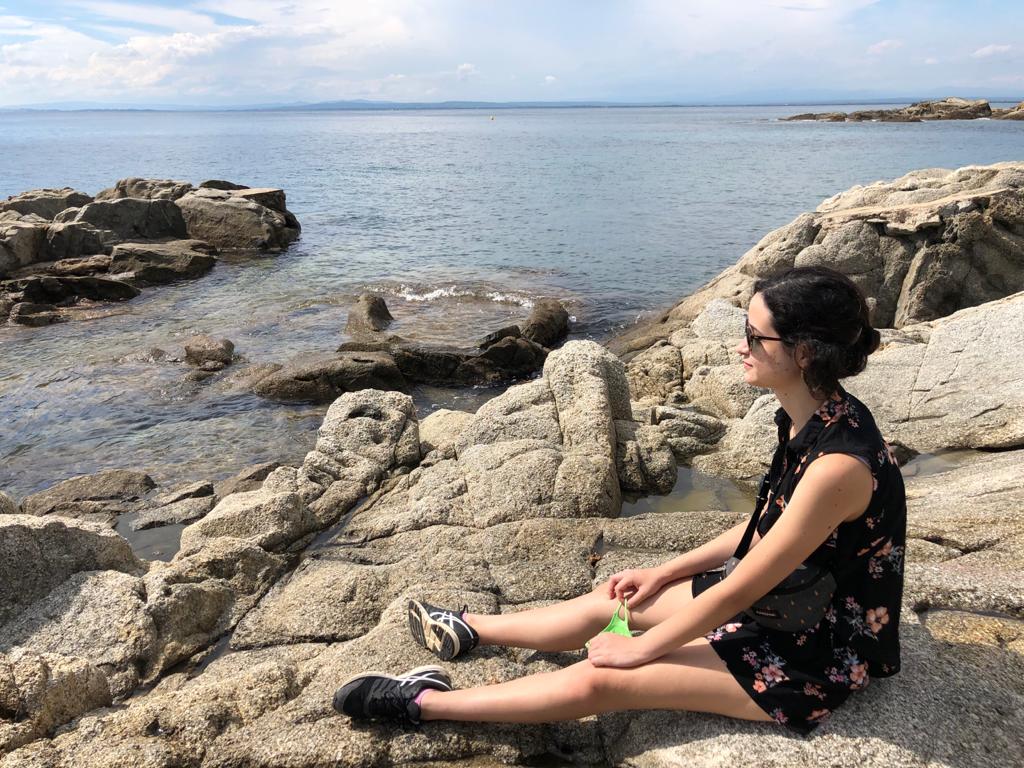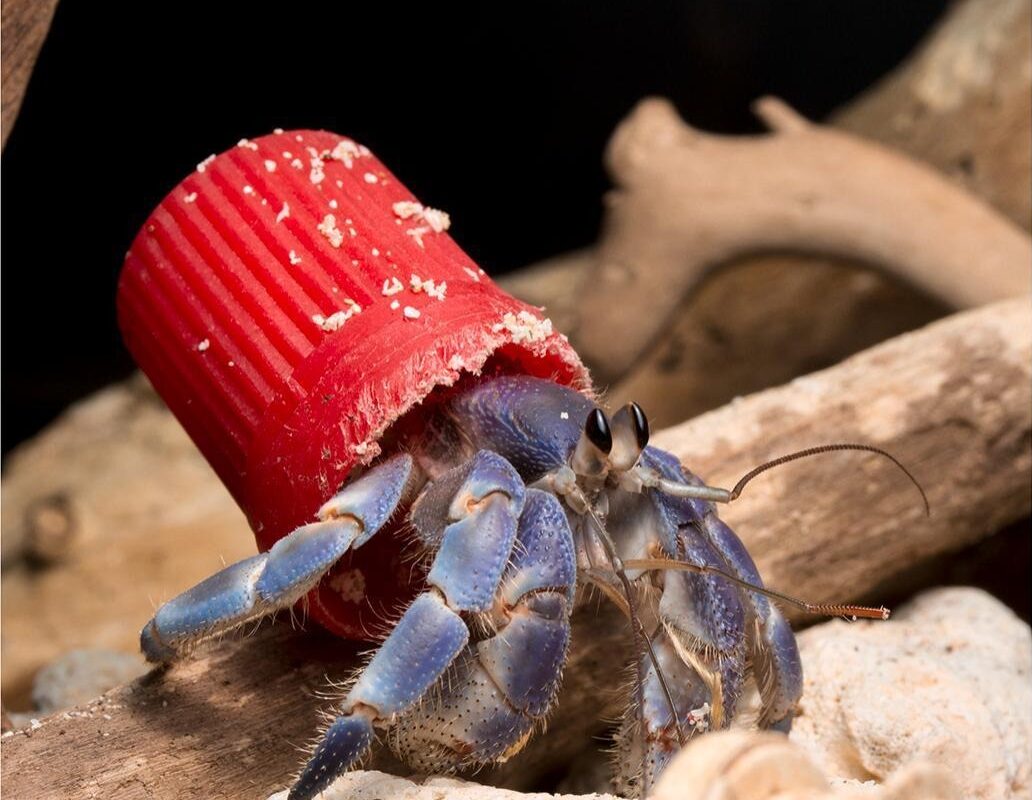Jagiello, Z., Dylewski, Ł., & Szulkin, M. (2024). The plastic homes of hermit crabs in the Anthropocene. Science of the Total Environment, 913(January). https://doi.org/10.1016/j.scitotenv.2023.168959
Stalking sea animals on social media may be useful!
Plastic world
Did you know that social media can help scientific research in marine ecology? New technological advances mean new ways to study our oceans and keep track of what’s going on in the big blue ocean, allowing researchers new sources of information and data.
This time, we’ll talk about crabs, specifically hermit crabs’ new behavior. As plastic invades every corner of our world, hermit crabs have been recorded using plastic and other anthropogenic materials as protection. This study has used iEcology, internet Ecology, as a new tool in ecological research.
Crabs’ social media
For the last few years, ecologists have been increasingly using digital data from social media platforms, which led to the creation of iEcology as a field, enabling scientists to explore sources like Google, Facebook, and others, through their videos, images, texts and sounds. Although its application in ecology isn’t extended, its validity has been demonstrated in conservation.
In the study regarding this article, images posted online serve to show a new fashion amongst hermit crabs: instead of using gastropod shells, they’re using shells coming from human waste, be it metal, glass or plastic (Figure 1). Hermit crabs inhabit shells to protect their most vulnerable parts, to protect themselves from desiccation and predators, influencing their survival and reproduction. So, shell choice is fundamental for them, and many factors come into the selection of one as it will have great consequences; it can also influence females choosing their mates depending on the males’ shell features.
The hermit crabs’ new fashion choice was studied on different online platforms such as Flickr, iNaturalist, Google Images, Youtube and Alamy, to quantify these artificial shells and what material they are made of: plastic, glass, or metal waste. On top of combing through these platforms, they also searched through literature using the same keywords. For each image they found of a hermit crab with an artificial shell, researchers also recorded its geographical location, the year of the sighting, what kind of material it is made of and its smoothness and shape.
At the time of the literature search, only 4 publications were found in which this phenomenon was reported, with a total of 10 individuals using artificial shells.

Photographs: Shawn Miller
Crabs’ wardrobe
This is a phenomenon occurring worldwide. The majority of these artificial shells were made of plastic (84.5%), especially white and black plastic caps (Figure 2).
There is an important factor to take into account in these results: because of the color contrast of plastic compared to other materials, it can be easier to spot and therefore more reported and photographed. People’s subjectivity can also influence whether or not to post these images online.
But why is this behavior happening? Plastic pollution is a global problem, making it easily available, especially taking into account the decline of the mollusc population, making their shells harder to find. What could influence individual preference for artificial materials? The study proposes 4 mechanisms:
- Novel artificial shells could be attractive to females.
- They could be energy-saving for crabs, as plastic is likely to be lighter than natural shells.
- Hermit crabs use odor cues to find new shells; one of the chemical compounds in this smell is dimethyl sulphide (DMS), which is also found in plastic.
- The rise of plastic pollution in marine environments could be influencing their choice because of camouflage. Trying to mimic their surroundings to hide from predators, crabs could be picking plastic over natural shells.
This behavior could end up having consequences in natural selection, even maybe affecting long-term evolution. Acquiring the best shells is a competition and a limiting factor for population growth, so artificial shells could interfere with this. Not only that, but the mere novelty of those shells could influence mate choice in females. Other factors, such as the light weight of the shells and chemical properties add complexity to their influence.

Photograph: Shawn Miller
Crabs’ future
We keep finding out different ways in which humans pollute the world and its different consequences. The evolution of technology allows us to explore this phenomenon in different ways. This time, it was found that hermit crabs are now using anthropogenic materials like plastic and metal as artificial shells, and that is a global phenomenon which could impact natural selection.
To better understand hermit crab’s weird choice of a home, field surveys and field and lab experiments need to be done, combined with stalking them on social media.
Cover image: Jagiello, Dylewski & Szulkin (2024). Photograph: Shawn Miller. Image cut from original.

I have a degree in Sea Science and a Masters in Environmental Evaluation and Monitoring of Marine and Coastal Ecosystems, and I currently work as a scientific divulgator in the University of Barcelona. My main scientific interests are about conservation and ecology, especially anything about marine invertebrates. I find them the most fascinating creatures on Earth, strange yet so familiar. On a visit to the beach as a baby, I learned to crawl by going towards the sea at full speed! I enjoy reading, drawing, and writing fantasy novels in my spare time.

